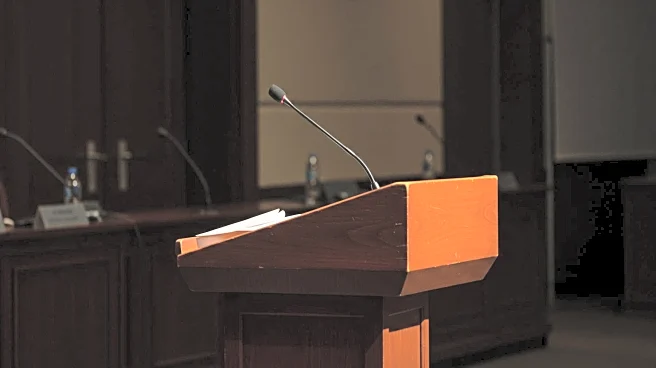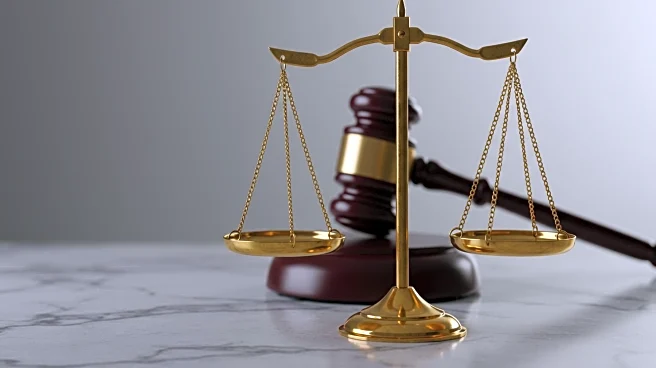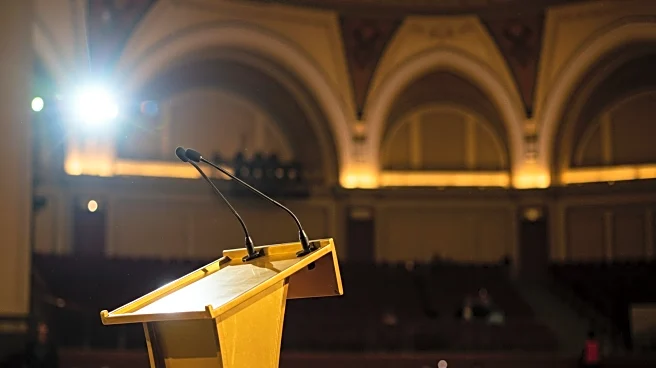What's Happening?
Federal Reserve Chair Jerome Powell indicated a potential rate cut during his speech at the Jackson Hole Economic Policy Symposium, citing a fragile labor market and shifting economic risks. Powell noted that while inflation remains above the 2% target, the risks to employment have increased, warranting possible policy adjustments. The labor market is in a 'curious' state with slowing labor supply and demand, which could lead to sharp downturns in employment. The Fed's benchmark interest rate has remained unchanged since December, as officials navigate a complex economic landscape marked by a slowdown in labor force growth and elevated tariffs.
Why It's Important?
Powell's remarks suggest a pivot towards a more accommodative monetary policy, which could have significant implications for the U.S. economy. A potential rate cut may support the labor market by lowering borrowing costs, encouraging investment, and stimulating economic activity. However, it also raises concerns about inflationary pressures, which remain a key focus for the Fed. The market's reaction to Powell's speech, including a surge in the Dow Jones Industrial Average and a weakening U.S. dollar, underscores the impact of monetary policy signals on investor sentiment. The Fed's revised monetary policy framework emphasizes flexibility, allowing for adjustments in response to evolving economic conditions.
What's Next?
The potential rate cut is expected to be discussed at the Fed's September meeting, with traders pricing in a high probability of a 25 basis point reduction. The upcoming economic data, particularly the August jobs report and inflation figures, will be critical in shaping the Fed's decision. Powell's comments also highlight the political pressures facing the Fed, with President Trump advocating for rate cuts and expressing interest in replacing Powell when his term expires. The central bank's independence and its ability to navigate these pressures will be closely watched by stakeholders.











